Cucumber plants are a popular choice for home gardeners, but they can be susceptible to a variety of problems, including yellow leaves. There are a number of reasons why cucumber leaves might turn yellow, including watering problems, nutrient deficiencies, and pests and diseases. If you notice your cucumber leaves turning yellow, it's important to identify the cause so that you can take steps to correct it.
Top Reasons Your Cucumber Plant Leaves Are Turning Yellow
Yellowing cucumber leaves can be caused by a range of factors, including inadequate water, insufficient light, diseases, pests, poor soil conditions, and nutrient deficiencies. In many cases, the first sign of the problem is the yellowing of the leaves, which may start at the base of the plant and gradually move up. The leaves may also appear wilted or droopy, and the plant may stop producing new fruit or flowers.
To properly address the issue, it is important to identify the specific cause of the yellowing leaves. Below are some of the most common reasons why cucumber plant leaves turn yellow and what you can do to resolve the problem.
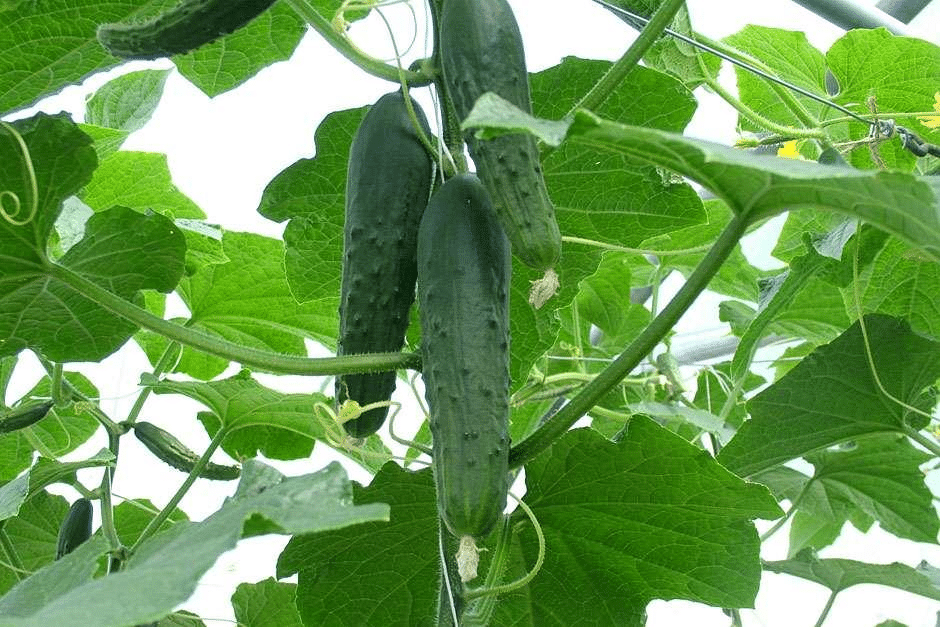
Reason 1: Watering the Cucumber Plant
Topping the list of reasons why your cucumber plant leaves are turning yellow is watering. Simply put, there's a sweet spot when it comes to watering, and finding the right balance in the watering schedule, along with adequately draining soil is the first step to preventing your leaves from yellowing. So let's get into how it happens and how to fix it.
How it Happens
Overwatering –
Overwatering is a common cause of yellowing cucumber leaves. When the soil is constantly wet, it can lead to root rot and prevent the plant from taking up essential nutrients. The excess moisture also creates a favorable environment for fungal growth, which can further damage the plant. As the roots become damaged, they cannot transport water and nutrients effectively, causing the leaves to turn yellow and wilt.
To prevent overwatering, it is important to check the soil moisture regularly and only water the plant when the top inch of soil looks dry, or feels dry to the touch. Avoid watering too frequently and ensure that the plant is grown in well-draining soil.
Underwatering –
Underwatering is another common cause of yellowing cucumber leaves. When the soil is too dry, the plant cannot take up enough water and nutrients, which can cause the leaves to wilt and turn yellow, resulting in a plant that becomes stunted and stops producing new fruit.
To prevent underwatering, it is important to water your cucumber plants regularly, especially during hot weather. Check the soil moisture regularly by inserting your finger into the soil up to the first knuckle. If the soil feels dry, it's time to water.
Water the plant deeply, making sure the water reaches the roots, but avoid overwatering as well. Watering early in the day is ideal as it allows the leaves to dry off before nightfall, reducing the risk of fungal diseases.
It's also important to note that certain factors such as high temperatures or windy conditions can increase the plant's water requirements. In such cases, you may need to water the plant more frequently to keep the soil moist.
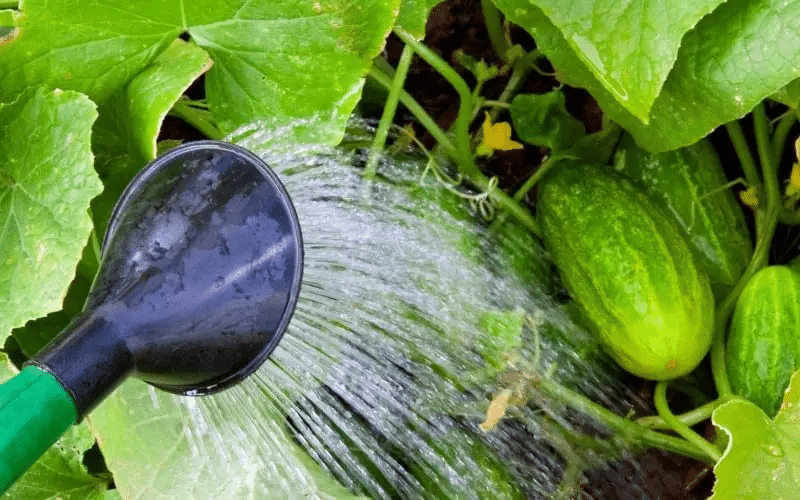
Inconsistent watering –
Inconsistent watering can also cause cucumber leaves to turn yellow. If the plant receives too little water, it can become stressed and exhibit symptoms such as yellowing leaves, stunted growth, and poor fruit development. On the other hand, overwatering can also cause problems, as mentioned earlier.
Deep and regular watering is a key takeaway with the cucumber. Cucumbers need about 1-2 inches of water per week, depending on the weather conditions. If the weather is hot and dry, the plant may need more water to stay healthy.
Using drip irrigation is a great way to deliver water directly to the plant's roots, ensuring that it gets the right amount of water it needs. You can also consider using a mulch layer around the plant, which can help retain soil moisture and reduce the frequency of watering.
Consistent and appropriate watering is essential for healthy cucumber plants, and you should strive to maintain a regular watering schedule throughout the growing season to prevent the leaves from turning yellow.
What it Looks Like:
Yellowing due to watering issues can affect both the leaves and stems of cucumber plants, as well as the overall health of the plant's roots.
When a cucumber plant is overwatered or underwatered, its leaves can turn yellow or brown and become wilted or crispy. The yellowing typically begins at the tips of the leaves and progresses toward the center of the leaf. In severe cases, the entire leaf may turn yellow and fall off the plant.
If the plant is consistently underwatered or overwatered, it can lead to root damage or rot, which can ultimately kill the plant. Signs of root damage or rot include yellowing or browning of the lower leaves, a general lack of vigor or growth, and wilting or drooping of the plant.
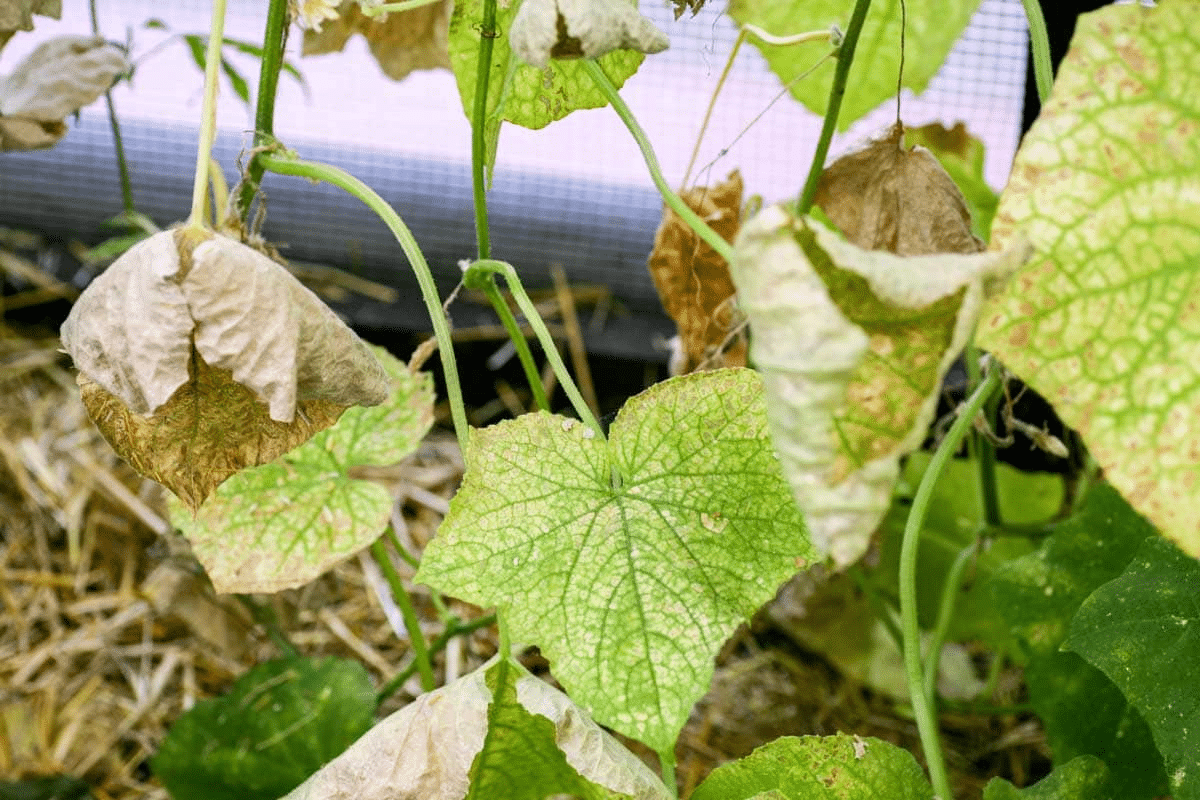
How to Fix It:
Fixing yellowing cucumber leaves due to watering issues depends on the specific problem that's causing it. Here are some steps you can take to address the issue:
● Check soil moisture: If the soil is too dry, water the plant deeply and consistently to ensure the soil stays moist. If the soil is too wet, reduce the watering frequency and allow the soil to dry out slightly before watering again.
● Improve drainage: If the soil is consistently waterlogged, improve drainage by adding organic matter, such as compost or well-rotted manure, to the soil. Alternatively, you can transplant the plant to a better-draining location or container.
● Mulch the soil: Mulching can help regulate soil moisture levels by retaining moisture and reducing evaporation. A layer of organic matter, such as straw or shredded leaves, can help keep the soil moist and reduce the frequency of watering.
● Use drip irrigation: Drip irrigation delivers water directly to the plant's roots, minimizing water waste and reducing the risk of overwatering.

Reason 2: Pests
Pests can definitely be a reason why your cucumber plants are turning yellow. There are a wide array of known cucumber pests, but so you dont get too overwhelmed let's just look at these four.
Pest Types
● Spider mites: These tiny pests can cause yellowing leaves and stippling or webbing on the undersides of the leaves.
● Aphids: These small, soft-bodied insects can cause yellowing and distortion of leaves, as well as the presence of sticky honeydew on the plant.
● Cucumber beetles: These beetles can cause yellowing and wilting of leaves, as well as damage to the fruit.
● Whiteflies: These tiny insects can cause yellowing and wilting of leaves, as well as the presence of sticky honeydew on the plant.
What it Looks Like:
Different pests can affect different parts of the cucumber plant, resulting in various symptoms. Here are some common symptoms of pest infestations on cucumber plants:
● Leaves: Pests such as spider mites, aphids, and whiteflies can cause yellowing or stippling of leaves. Cucumber beetles can cause holes in the leaves or wilting.
● Stems: Pests such as cutworms or borers can cause damage to the stems, resulting in wilting or stunted growth.
● Roots: Pests such as root-knot nematodes can cause damage to the roots, resulting in stunted growth, wilting, or yellowing of leaves.
● Fruit: Pests such as cucumber beetles or fruit flies can damage the fruit, resulting in scars or deformities.
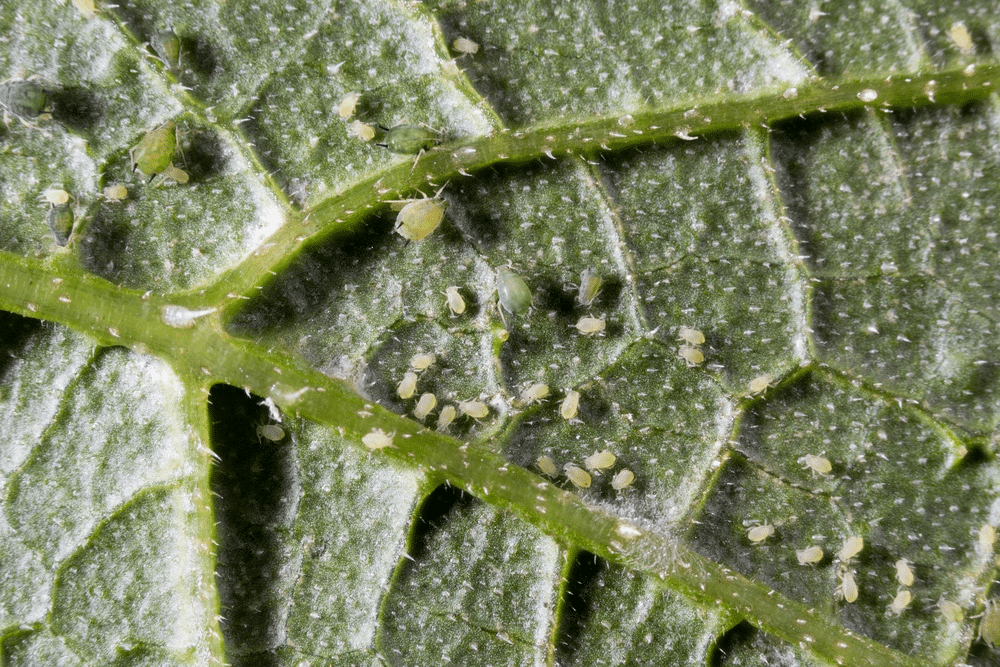
How to Fix It:
The method for fixing a pest problem on cucumber plants will depend on the specific pest and the severity of the infestation. Here are some general steps you can take to address a pest issue:
● Identify the pest: It's important to identify the specific pest affecting your cucumber plants to determine the appropriate control method.
● Remove affected plant parts: If only a few leaves or stems are affected, you can remove them and dispose of them to prevent the spread of the pest.
● Use natural controls: For minor infestations, you can try natural controls such as spraying the plant with water to dislodge insects or using insecticidal soap or oil. You can also try introducing beneficial insects such as ladybugs or lacewings to prey on the pests.
● Use chemical controls: For more severe infestations, you may need to use chemical controls such as insecticides. Always follow the instructions on the label carefully and take care to minimize the impact on beneficial insects.
● Practice prevention: To prevent future pest problems, practice good garden hygiene by removing plant debris and weeds, rotating crops, and avoiding over-fertilization. You can also use physical barriers such as row covers to protect plants from pests.
Reason 3: Sunlight deficiencies
If your cucumber plant isn't getting enough sun, this can also cause cucumber leaves to turn yellow. Cucumbers require full sun to grow and produce fruit, which means they need at least 6-8 hours of direct sunlight per day.
What it Looks Like
When cucumber plants do not receive enough sunlight, their leaves may turn yellow and the plants may become leggy or weak. The leaves may also be smaller than usual, and the plant may produce fewer or no flowers.
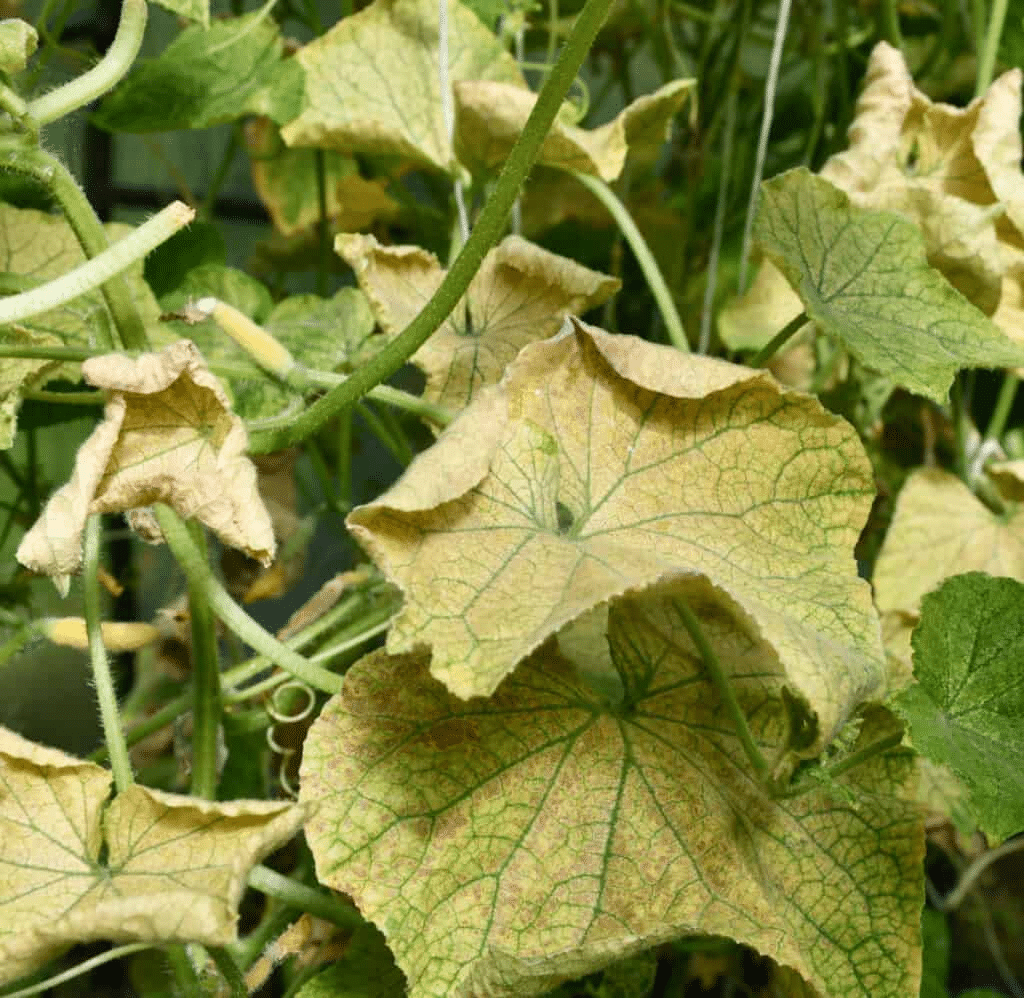
How to Fix It
To address a sunlight deficiency in cucumber plants, you can take the following steps:
● Relocate the plant: If possible, move the plant to a location where it will receive more sunlight.
● Prune nearby plants: If other plants or trees are blocking sunlight, prune them back to allow more light to reach the cucumber plant.
Reason 4: Nutritional Deficiencies
Nutritional deficiencies can also cause cucumber leaves to turn yellow. Cucumber plants require a variety of nutrients to grow and produce healthy fruit, and deficiencies in certain nutrients can cause yellowing leaves.
What it Looks Like
The specific symptoms of nutritional deficiencies can vary depending on the nutrient that is lacking. For example:
● Nitrogen deficiency: Leaves turn yellow starting at the base of the plant and progressing upward.
● Potassium deficiency: Older leaves turn yellow and then brown, with the edges of the leaves becoming scorched or burnt-looking.
● Magnesium deficiency: Yellowing starts at the leaf edges and then progresses inward, with green veins remaining visible.
● Iron deficiency: Young leaves turn yellow while veins remain green, and the leaves may become stunted or distorted.
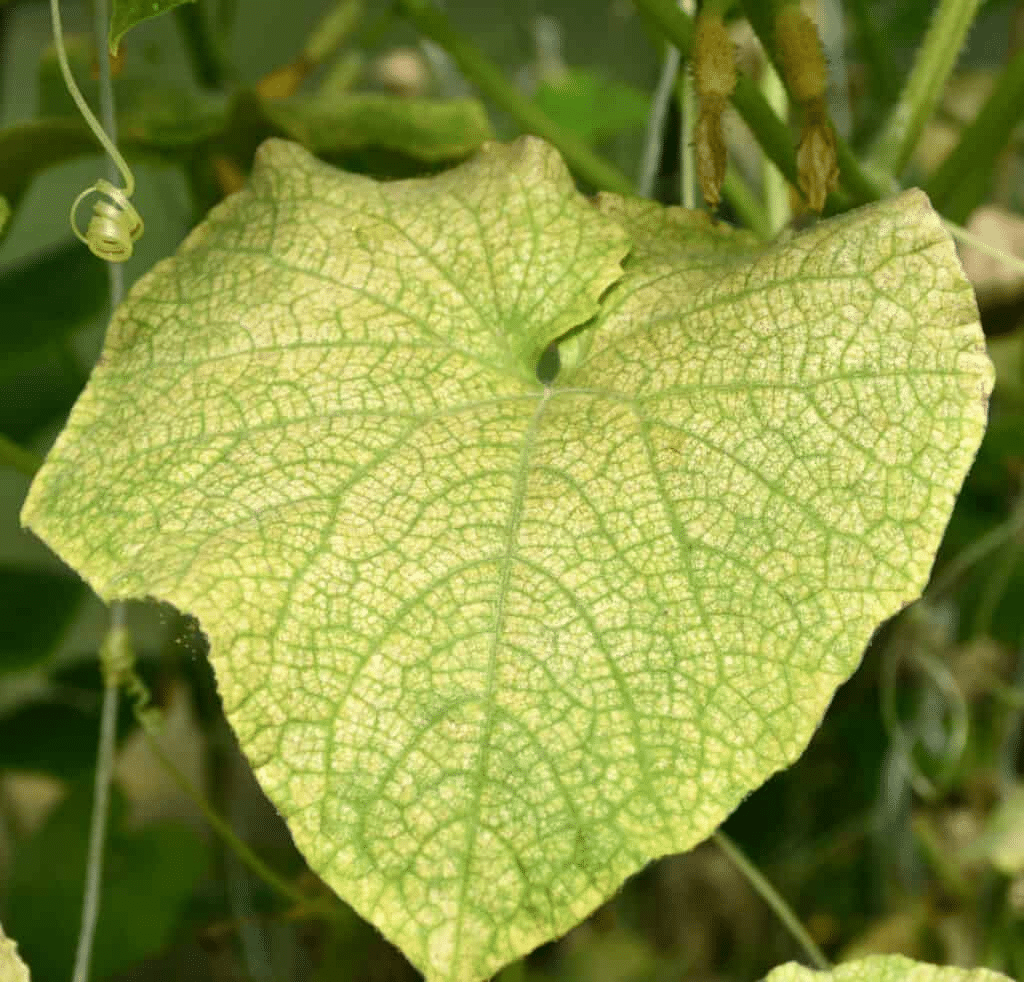
How to Fix It
To address a nutritional deficiency in cucumber plants, you can take the following steps:
Identify the nutrient deficiency: Take note of the specific symptoms and compare them to nutrient deficiency charts to determine which nutrient may be lacking.
Adjust soil pH: Some nutrients are only available to plants within a certain pH range, so adjusting the soil pH may help make these nutrients more available to the plant.
Apply fertilizers or soil amendments: Depending on the nutrient deficiency, you can apply fertilizers or soil amendments to provide the missing nutrients.
Improve soil quality: Incorporating organic matter into the soil can help improve overall soil quality and make nutrients more available to plants.
It's important to note that over-fertilizing can also cause problems, so be sure to follow recommended application rates and schedules for any fertilizers or amendments used.
Diseases caused by viruses, bacteria, and fungi can also cause cucumber leaves to turn yellow. These diseases can spread quickly and can potentially kill the plant if left untreated.
What it Looks Like
The symptoms of a plant disease will depend on the specific pathogen causing the issue. Some common symptoms of plant diseases include:
● Yellowing leaves that may wilt or dry out
● Brown spots or lesions on the leaves or stems
● Stunted or distorted growth
● Black or dark-colored spots on the fruit
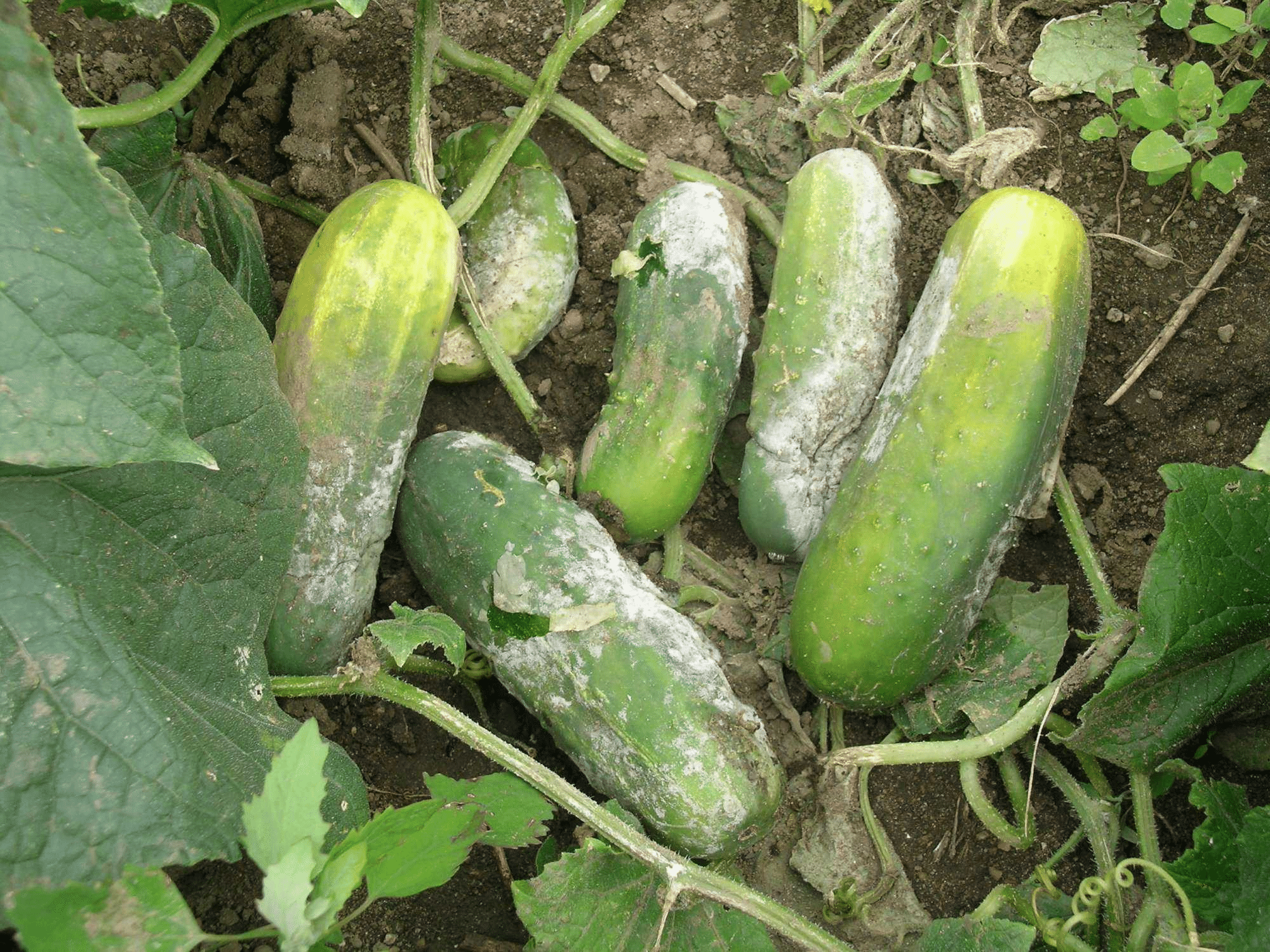
How to Fix It
To address plant diseases in cucumber plants, you can take the following steps:
● Identify the disease: Take note of the specific symptoms and compare them to disease identification guides to determine which pathogen may be causing the issue.
● Remove infected plant parts: Cut away any infected plant parts, including leaves, stems, and fruit, and dispose of them in the trash. Do not compost diseased plant material.
● Apply fungicides or bactericides: Depending on the disease, you can apply fungicides or bactericides to prevent the spread of the pathogen.
● Improve growing conditions: Providing good growing conditions, such as adequate water and nutrients, can help strengthen the plant's immune system and prevent disease.
Prevention is also key to avoiding plant diseases. Good practices include rotating crops, planting disease-resistant varieties, and practicing good sanitation in the vegetable garden. By staying vigilant and taking action at the first sign of a problem, you can help keep your cucumber plants healthy and productive.
In Conclusion
Unfortunately, there is no cure for viral diseases such as mosaic virus. Infected plants should be removed and destroyed to prevent the disease from spreading. For fungal and bacterial diseases such as Downy mildew and Bacterial wilt, applying a fungicide or bactericide can help to prevent the spread of the disease.
In the case of Fusarium wilt, affected plants should be removed and destroyed, and the soil should be treated with a fungicide.
To prevent these diseases from affecting your cucumber plants, you should practice good sanitation, and crop rotation, and use disease-resistant cucumber varieties. Additionally, make sure to provide your plants with adequate water and nutrients to keep them healthy and strong.
FAQ’s
Do I need to cut off yellow cucumber leaves?
Depending on the reason, yellow leaves can be pruned off to prevent further disease spread, to allow for more light, and to direct energy to healthier leaves.
What do over-watered cucumber leaves look like?
Overwatered leaves will look yellow and have a mushy texture. They will look waterlogged and have a sour smell.
How long does it take a cucumber plant to grow?
From seed to harvest is generally from 50-70 days.
What are the best plants to plant near cucumber plants?
Cucumbers companion well with quite a few plants. In particular nasturtium, corn, dill, root vegetables, marigolds and beans and sunflowers.

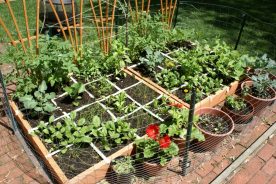



No Comments